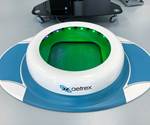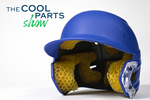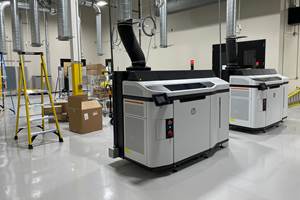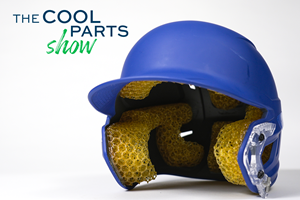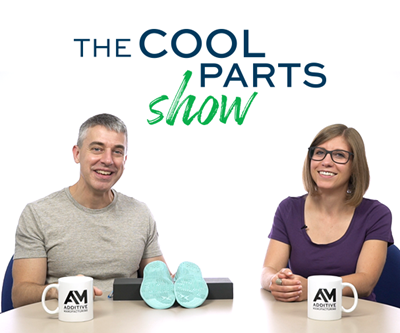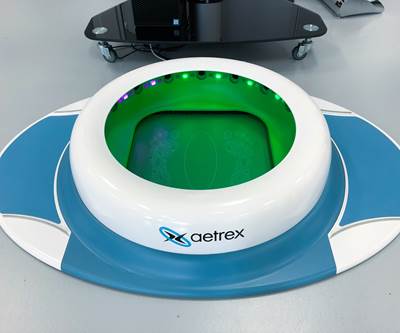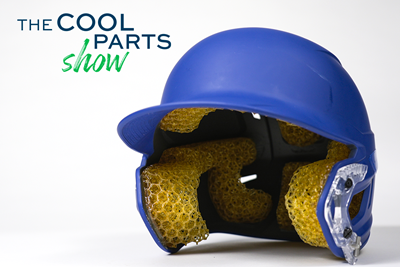Fizik Utilizes Carbon DLS Technology for One-to-One Program, Creating Customized Bike Saddles
Fizik’s customized bike seat program uses Carbon’s Digital Light Synthesis technology and personalized rider data to create a line of truly custom saddles, giving bike riders the best bike seat for their posterior — only made possible through additive manufacturing.
Utilizing comfortable sporting equipment can have a strong influence on performance, enabling both amateur and professional enthusiasts to stay focused and motivated, and lessen any pain or discomfort during strenuous activities.
Using rider data from its own testing and performance-enhancing technology, Fizik has designed and produced multiple latticed saddle models using Carbon’s elastomeric materials and Digital Light Synthesis (DLS). Source (all images): Fizik
This is particularly true in bike riding where bike saddles (seats) are one of the most crucial points of contact between riders and their bikes. That’s why Fizik turned to additive manufacturing (AM) to customize bike saddles for individual riders to improve the riding experience.
Using rider data from its own testing and performance-enhancing technology, Fizik has designed and produced multiple latticed saddle models using Carbon’s elastomeric materials and Digital Light Synthesis (DLS). Because these designs were successful, Fizik is now taking the next step — creating custom saddles with its One-to-One product program.
Focused on personal comfort and performance, One-to-One by Fizik designs, builds and delivers one-of-a-kind custom saddles based on the rider and their unique riding needs. Traditionally, saddles use uniform-density foam for padding and are made into different sizes to fit different ischial bone widths and shapes. Sometimes inserts are added to provide additional comfort in specific contact spots. Riders may try multiple seats before finding the saddles that fit their particular body characteristics and riding position.
Every Cyclist Is Unique
Fizik aims to eliminate that time-consuming search for the perfect bike seat.
“We know that a good, accurate fit depends on many factors: bike geometry, intended use, saddle shape, and position. But most importantly every cyclist is unique: experience, sensitivity, history of injuries, body shape, riding goals. All of this can affect the way we sit on the saddle,” says Giovanni Fogal, Fizik brand manager.
A saddle designed for many can provide a generic solution to very specific problems, but when more of these factors can be tuned specifically to the rider, it leads to a more comfortable ride and better performance.
Fizik had already introduced its Adaptive 3D line of saddles using Carbon DLS. Carbon’s portfolio of elastomeric materials, lattice design software and 3D printing technology enabled Fizik to develop the new saddle program without the constraints or limitations imposed by traditional production methods and materials. It designs and manufactures multiple functional zones within the saddle, joined together progressively and seamlessly in the same padding. The next step for Fizik was developing the custom saddle offering for its riders.
AM makes this process feasible because it makes it easier to manufacture one-off production parts like bike saddles, as opposed to traditional manufacturing methods like injection molding, which requires a larger scale commitment and entails higher tooling costs.
Without the constraints of batch production imposed by injection molding methods, each 3D printed saddle padding can be unique, which means it’s possible for saddle padding to be produced based on an individual rider’s specifications. With this goal, Fizik says it spent three years researching, developing, testing and confirming a process which enables One-to-One representatives to capture, interpret and translate a rider’s personal pressure data into a custom, 3D printed saddle topper.
Using a system engineered to collect pressure map data from riders enables Fizik to customize a saddle design with distinctive zonal cushioning tuned to adapt specifically to the rider’s body.
Capturing Rider Pressure Data
To create a truly custom saddle, a rider’s pressure data must be captured — including the body force transferred to the saddle as well as how that force is distributed across the saddle’s surface. Of course, that pressure changes continuously while riding, as the rider pedals and shifts riding positions, which means it’s crucial to capture pressure measurements dynamically while in motion and over time.
Unlike traditional tools that aim to measure sit bone distance or sacrum angle, measuring pressure while riding reflects the real sitting position on the bike.
To capture such data, Fizik worked with GebioMized to develop a pressure sensor mat capable of measuring pressure at 64 points spread out across the saddle’s surface, relaying data in real-time wirelessly. The mat is applied on a saddle and the cyclist is positioned on it in his or her normal riding style. This enables GebioMized’s software to capture pressure distribution when static or dynamic and in a variety of seating and handlebar positions.
Unlike traditional tools that aim to measure sit bone distance or sacrum angle, measuring pressure while riding reflects the real sitting position on the bike and enables Fizik to identify the parameters that matter most, such as indicators of stability on the saddle, peak pressure identifiers and hot spots, and pelvic tilt.
A trained bike fitter guides the One-to-One fit session using a dedicated mobile app to record the data.
Riders can get measured and assessed easily on their own bikes, which can be set up on a Wahoo Kickr Rollr at select retailers. A trained bike fitter guides the One-to-One fit session using a dedicated mobile app. Relevant information about the rider’s current bike setup and saddle position is gathered through a simple questionnaire, then pressure data is captured on the rider’s current bike and saddle setup in all relevant riding positions.
Pressure data from each measurement session is recorded while riding on the handlebar tops, hoods and in the drop position for various types of bikes. After processing, this data is cross-checked with a rider’s discipline and gender to ensure correct interpretation.
The results are displayed in a pressure chart showing the mean pressure across the saddle, the front and rear and left and right saddle pressure comparisons, the maximum pressure values and their locations on the saddle, the center of movement and pelvic tracking pattern, and the gross angle of pelvic hemisphere alignment.
Converting Data to Design
A key part of the One-to-One measurement session is to match the rider with the ideal saddle shape. For this, Fizik developed a matching algorithm that takes into account all key parameters derived from initial data collection to determine the most suitable saddle shape for a given load type and riding style.

A saddle designed for many can provide a generic solution to very specific problems, but when more of these factors can be tuned specifically to the rider, it leads to a more comfortable ride and better performance.
Pressure data is captured again on the rider’s current bike setup with the recommended saddle shape in all relevant riding positions. These new measurements on the selected saddle shape are used as the baseline to create the custom 3D printed padding structure that reflects a rider’s specific needs, adapting to load pattern, compensating asymmetries and hot spots, and addressing instability.
Fizik leveraged Carbon’s Custom Production Software to automate the design of each saddle according to each rider’s unique data. A software program powered by Carbon Design Engine translates pressure data into parameters for the elastomeric lattice structure that forms the saddle’s topper, dynamically fine-tuning it with distinctive cushioning. Thicker struts result in a denser zone offering more support, while thinner struts are used for more open zones that offer more comfort and compression. The company says transitions between zones are progressive and seamless. The automation of this design process is what enabled Fizik to offer this product to all of its customers, not just elite racers.
The rider can select their exact saddle configuration (rail type) and finalize their order. The order is automatically transferred to Fizik. Utilizing the Carbon Custom Production Software, custom-latticed saddle toppers are then marked with a unique serial number, added to print projects and sent to a production facility via a fully automated workflow. Once printed, the saddle topper is assembled by a team of skilled Fizik technicians.
Getting Ready to Ride
Once the One-to-One saddle has been received and mounted on the bike, the rider can return to the dealer for a final session where pressure data will be captured on the new saddle for comparison to the initial saddle setup, highlighting all the parameters that have improved.
“It’s clear that a traditional one-to-many saddle design can only provide an approximate solution to very specific problems,” Fogal says. “With One-to-One, today we achieve what every saddle manufacturer has always dreamed of: bringing to life customized support available to every cyclist.”
Related Content
FDA-Approved Spine Implant Made with PEEK: The Cool Parts Show #63
Curiteva now manufactures these cervical spine implants using an unusual 3D printing method: fused strand deposition. Learn how the process works and why it’s a good pairing with PEEK in this episode of The Cool Parts Show.
Read MoreCopper, New Metal Printing Processes, Upgrades Based on Software and More from Formnext 2023: AM Radio #46
Formnext 2023 showed that additive manufacturing may be maturing, but it is certainly not stagnant. In this episode, we dive into observations around technology enhancements, new processes and materials, robots, sustainability and more trends from the show.
Read MoreWhat Does Additive Manufacturing Readiness Look Like?
The promise of distributed manufacturing is alluring, but to get there AM first needs to master scale production. GKN Additive’s Michigan facility illustrates what the journey might look like.
Read More3D Printed Lattices Replace Foam for Customized Helmet Padding: The Cool Parts Show #62
“Digital materials” resulting from engineered flexible polymer structures made through additive manufacturing are tunable to the application and can be tailored to the head of the wearer.
Read MoreRead Next
Shoe Insoles Precisely Tailored to Individual Feet: The Cool Parts Show #4
This episode of The Cool Parts Show looks at how 3D printing will deliver tailored products. Scanning feet for their geometry and pressure enables Aetrex and EOS to manufacture insoles that are unique to individual wearers.
Read MoreThe Foot Measurement System That Allows for Mass Customized Insoles
Aetrex’s Albert scanner is an example of how advances in measurement technology aid 3D printing in realizing its promise.
Read More3D Printed Lattices Replace Foam for Customized Helmet Padding: The Cool Parts Show #62
“Digital materials” resulting from engineered flexible polymer structures made through additive manufacturing are tunable to the application and can be tailored to the head of the wearer.
Read More


